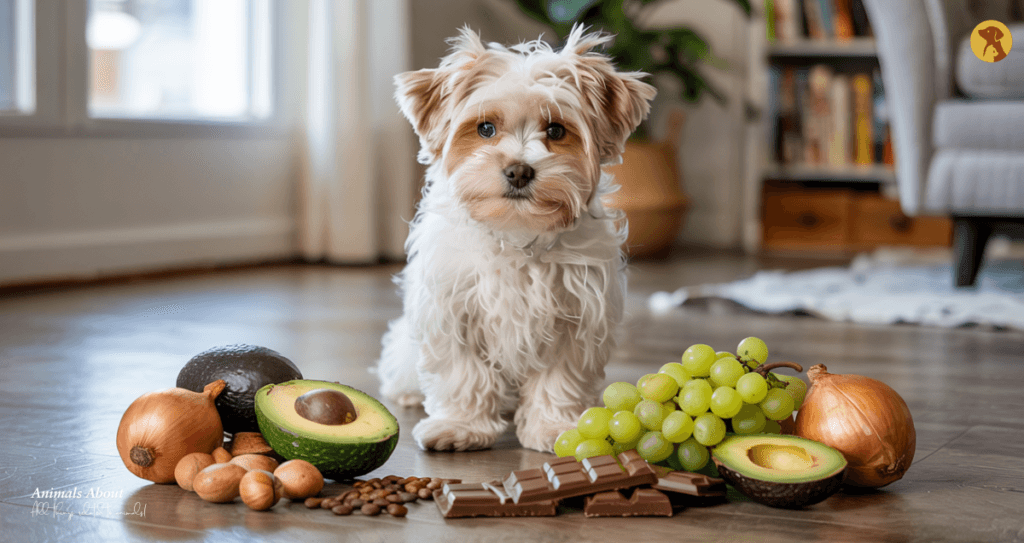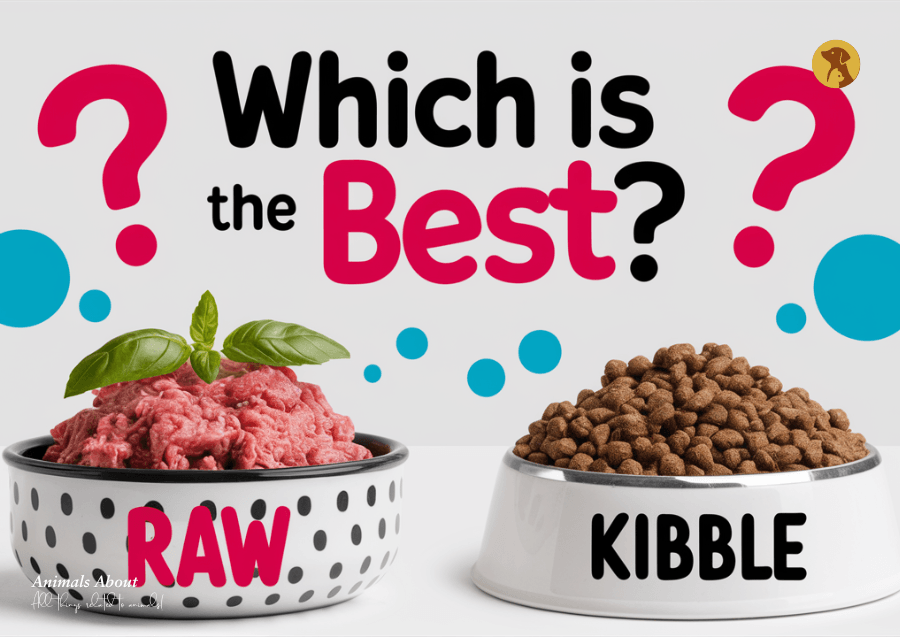Safe Human Foods for Dogs – What Can They Eat?

Sharing your meal with your dog might feel like love, but is it safe? Discover the surprising truth about which foods your pup can enjoy guilt-free! Many dog owners ask the same question: “What human food is good for dogs?” Whether it’s a snack under the dinner table or a bite from your sandwich, it’s tempting to share with your furry friend. But not all people’s food is safe for dogs. Some foods we enjoy every day can be harmful—or even toxic—to dogs. That’s why knowing the list of safe human foods dogs can eat is essential for responsible pet ownership. In this guide, you’ll learn about dog-friendly human food, how to feed dogs table scraps safely, and what to avoid entirely. Why Some Human Foods Are Safe for Dogs Think your leftovers are harmless? Think again. What fuels you might upset your dog’s tummy—or worse. Dogs process food differently from humans. While they can enjoy many of the same nutrients we do, their digestive systems are more sensitive. Offering your dog the wrong food can lead to upset stomach, allergies, or more serious health concerns. On the flip side, certain human foods offer valuable nutrients like fiber, protein, vitamins, and healthy fats—when given in moderation. This is where dog nutrition from human food becomes an important concept. With guidance, your dog can enjoy healthy, balanced treats that add variety and nutrition to their diet. Fruits and Vegetables: Natural and Nutritious Dog Snacks Want to give your dog a colorful snack? Nature has the answer! Can dogs eat fruits and vegetables? Yes—many fruits and veggies are perfectly safe and even beneficial for dogs. These make excellent healthy snacks for dogs and can be included in homemade treats or added to their meals. Avoid grapes, raisins, onions, and garlic—these are toxic foods for dogs and should never be offered. Always serve fruits and vegetables plain, without seasoning, butter, or oils. Safe Meats for Dogs: Protein-Packed and Delicious Does your dog drool over your dinner? Make it count with lean, healthy protein! Dogs thrive on protein, and many human meats are safe as long as they’re plain and properly cooked. Some of the safe meats for dogs include: Avoid processed meats like bacon, sausage, or deli meats, as they’re high in sodium and may contain harmful preservatives. Never serve raw meat unless approved by your vet. Safe Dairy for Dogs: Use With Caution A cheesy treat may be your dog’s dream, but proceed with care! Some dogs can tolerate small amounts of dairy, while others are lactose intolerant. If your dog enjoys dairy, try offering small portions of: Watch closely for signs of upset stomach, like gas or diarrhea. Introduce slowly and always avoid flavored, sweetened, or artificially colored dairy products. Grains and Carbs: Can Dogs Eat Them? Think carbs are just for humans? Your dog may enjoy them, too! Many grains are safe and nutritious for dogs. The key is to serve them plain and in moderation. These grains are easy to digest and often used in homemade dog food: Avoid processed baked goods or foods containing sugar, chocolate, or artificial sweeteners like xylitol, which is extremely toxic to dogs. Feeding Dogs Table Scraps Safely Guilt-free sharing starts with smart choices. It’s common to offer your dog a bit of your meal, but you need to be careful. Feeding dogs table scraps safely means choosing the right ingredients: Skip anything with seasoning, sauces, onions, or butter. Even small amounts of harmful foods can affect your dog’s health over time. Homemade Dog Treats Using People Food Treat time just got tastier—and healthier! Want to give your pup something special? Try making homemade dog treats using simple, vet-approved ingredients. A few easy recipes include: This gives you full control over ingredients and lets you avoid preservatives found in store-bought treats. It’s also a great way to include human foods that benefit dogs in their snack routine. People Food Safe for Dogs (Quick Reference) Tired of guessing what’s safe? Here’s a quick go-to list: List of foods dogs can eat: What not to feed dogs: When in doubt, always double-check. Some ingredients hidden in everyday recipes (like onion powder) can be dangerous even in small amounts. Balanced Treats for Dogs: Portion and Frequency Matter More isn’t always better—even with healthy foods. Even the healthiest, balanced treats for dogs should be served in moderation. Human food should only make up about 10% of your dog’s total daily caloric intake. Stick to fresh, whole ingredients and avoid processed items. Keep track of how your dog reacts to new foods, and adjust portions based on age, size, and activity level. Making Smart Choices for Dog Nutrition The best way to love your dog? Feed them right, from the bowl to the treat jar. Providing proper dog hygiene and a healthy diet is part of being a responsible pet parent. While dog bathing frequency and grooming are important, so is what you feed them. Offering safe, nutritious people food safe for dogs can be a joyful way to bond and keep your dog happy. Just remember—what’s healthy for us isn’t always healthy for them. Yo ur dog depends on you to make smart, safe choices. Use this Dog Nutrition Guide to navigate the world of shared snacks and safe table treats. For more helpful tips on dog coat care, how often you should bathe your dog, or even cleaning dogs with different coat types, check out our latest posts on animalsabout.org. FAQ Disclaimer: This content is for informational purposes only. Always consult your veterinarian before introducing any new food to your dog’s diet.
Raw vs Kibble Dog Food – What’s Best for Dogs?

Raw vs Kibble Dog Food – As loving dog owners, we all want what’s best for our furry friends. One of the biggest decisions you’ll make as a pet parent is choosing the right food. The debate of raw vs kibble dog food has been ongoing for years. Some pet parents swear by the natural, ancestral benefits of raw feeding, while others prefer the safety, convenience, and affordability of kibble. It’s no surprise that dog lovers often find themselves overwhelmed with conflicting opinions when trying to make the best decision. So, how do you decide which is best for your dog? The answer depends on a number of factors including your dog’s age, breed, activity level, any existing health conditions, and your own lifestyle. In this article, we’ll break down everything you need to know — the pros, cons, health risks, nutritional facts, and expert insights. Whether you’re considering feeding dogs raw meat or comparing brands of dry dog food, we’ve got you covered with a simple, easy-to-understand guide designed to help you make an informed decision for your pet. Understanding the Two Types of Dog Food Before diving into the comparison, let’s clearly define each option to understand their core differences. What is Raw Dog Food? Raw dog food typically includes uncooked meat, bones, organs, and sometimes fruits, vegetables, and supplements. This feeding approach is commonly known as the BARF diet (Biologically Appropriate Raw Food). The idea behind this diet is to mirror what a dog’s ancestors might have eaten in the wild before commercial pet food became the norm. It emphasizes natural, unprocessed ingredients that are packed with nutrients. Proponents of raw feeding believe this approach is more biologically suitable for dogs and can provide numerous health benefits. A raw diet often includes a wide range of fresh ingredients such as raw beef, chicken, turkey, or lamb, raw bones (like chicken wings or necks), liver and other organs, raw eggs, and sometimes fresh fruits and vegetables for fiber and vitamins. Some pet owners also add fish oils or supplements to make sure their dogs are getting a complete range of nutrients. What is Kibble? Kibble, on the other hand, is a type of commercial dog food that has been cooked at high temperatures and processed into dry, bite-sized pellets. It typically contains meat by-products, grains, vegetables, vitamins, and preservatives. The key advantage of kibble is that it is designed to be shelf-stable, affordable, and easy to serve. Most kibble brands aim to meet the nutritional standards set by pet food regulatory bodies. Some premium brands have improved their formulas to include real meat, avoid fillers, and provide grain-free or limited ingredient options. Freeze-dried dog food, grain-free kibble, and organic varieties have also gained popularity among health-conscious pet owners. Despite its convenience, kibble is sometimes criticized for containing processed ingredients and lacking the freshness of raw diets. Raw Dog Food Benefits Many dog owners have reported noticeable improvements in their pets’ health and vitality after switching to a raw diet. Here are some of the key benefits associated with raw feeding: 1. Improved Digestion Dogs on raw diets often experience better digestion, resulting in smaller, firmer stools and less frequent bowel movements. Raw food typically avoids the fillers and carbohydrates found in kibble, which can lead to dog digestion issues. The higher moisture content in raw food also helps maintain hydration, which supports kidney function and digestive health. 2. Shinier Coat and Healthier Skin A raw diet rich in omega-3 fatty acids, proteins, and essential nutrients often leads to a shinier coat and healthier skin. Dogs that suffer from allergies or dry, flaky skin may find relief with the switch to raw. Since raw food is free of artificial additives and chemicals, it reduces the likelihood of skin irritations and allergic reactions. 3. More Energy and Vitality Many pet owners report that their dogs become more energetic and alert after transitioning to raw food. This can be attributed to the diet’s high-quality protein content and nutrient density, which supports muscle development, immune function, and overall vitality. A biologically appropriate diet helps dogs perform at their best. 4. Better Dental Health Chewing on raw bones is a natural way to clean your dog’s teeth. It helps scrape off plaque and tartar, promoting healthier gums and reducing bad breath. This form of natural dental care is especially helpful for dogs that resist toothbrushing or dental chews. 5. Natural and Unprocessed Raw food avoids artificial preservatives, colors, and by-products, making it a great option for those who want to feed their pets a natural dog food diet. By sticking to whole, unprocessed ingredients, you ensure that your dog is eating food closer to what nature intended. Risks and Challenges of Raw Feeding While raw feeding offers many benefits, it is not without its challenges and risks. It requires careful planning and a solid understanding of canine nutrition. 1. Bacterial Contamination Handling raw meat increases the risk of contamination from bacteria such as Salmonella and E. coli. This can pose health risks not only to your dog but also to humans in the household, especially children, the elderly, or those with weakened immune systems. Proper hygiene and food safety practices are essential when preparing raw meals. 2. Nutritional Imbalance Creating a nutritionally complete raw diet is complex. If not done properly, it can lead to deficiencies in essential vitamins and minerals like calcium, phosphorus, and vitamin D. That’s why it is important to follow a proven recipe or consult with a veterinary nutritionist when starting raw feeding. 3. Time and Effort Raw feeding requires more effort than scooping kibble into a bowl. It involves meal planning, shopping for fresh ingredients, measuring portions, and storing food safely. This can be challenging for busy pet owners or those with limited access to fresh, quality meats. 4. Cost Due to the need for high-quality, fresh ingredients, the cost of raw feeding is generally higher than kibble. For owners of large dogs or multiple pets, this
